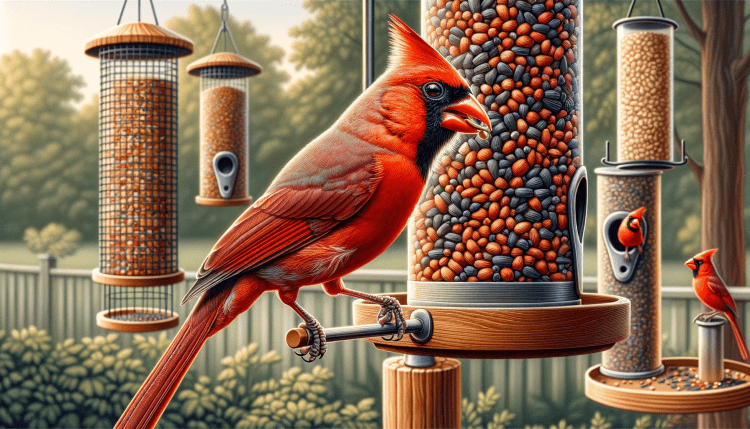
Quick Identification Guide for the Northern Cardinal (Cardinalis cardinalis):
Appearance:
- Size: About 8 to 9 inches in length.
- Male Coloration: Bright red all over with a black face mask extending from the bill to the throat.
- Female Coloration: Light brown or olive with reddish tinges and a more subdued face mask.
- Beak: Strong, conical, and orange or red.
Behaviors:
- Often seen perched in shrubs and trees, frequently visits bird feeders.
- Distinctive hop on the ground while foraging for seeds and insects.
Song:
- A series of clear, loud whistles. Both males and females sing, which is less common in songbirds.
Habitat:
- Found in the eastern and central United States, parts of Canada, Mexico, and Central America.
- Common in woodlands, gardens, shrublands, and wetlands.
Birds Commonly Confused With:
Summer Tanager: Male is entirely red but lacks the black face mask.
- Pyrrhuloxia: Similar shape, but has gray plumage with red highlights and a more curved beak.
- Vermilion Flycatcher: Bright red but smaller and has a different body shape.
Seasonal Behavior:
- Mostly non-migratory, though some movement can occur in the northern parts of their range.
- Known for being more visible in winter due to the lack of foliage and their bright plumage against snowy landscapes.
The Northern Cardinal is a popular and easily recognizable bird across its range, known for its vivid plumage and melodious song. Its adaptation to suburban environments and frequent visits to bird feeders make it a favorite among birdwatchers.

Quick Facts About the Northern Cardinal (Cardinalis cardinalis):
Family: Cardinalidae.
Size: Typically about 8 to 9 inches long.
Distinctive Coloration:
- Males: Bright red plumage with a black face mask.
- Females: Light brown or olive with reddish highlights and a less pronounced face mask.
Diet: Omnivorous, feeding mainly on seeds, grains, fruits, and insects.
Habitat: Common in woodlands, gardens, wetlands, and shrublands across the eastern and central United States, parts of Canada, Mexico, and Central America.
Nesting: Often nests in dense shrubbery or low trees. The nest is a cup made of twigs, grass, and leaves.
Eggs: Typically lays 3-4 eggs, which are pale green or blue with markings.
Behavior: Known for their loud and clear song. Both males and females sing, which is less common among songbirds.
Mating: Northern Cardinals are monogamous, and pairs often stay together year-round.
Cultural Significance: State bird of seven U.S. states and a popular icon in culture and art.
Conservation Status: Listed as of ‘Least Concern’ by the IUCN, with a stable and widespread population.
These facts provide a snapshot of the Northern Cardinal, highlighting key aspects of its biology, behavior, and cultural significance. The Northern Cardinal is one of the most recognized and admired backyard birds in its range.




